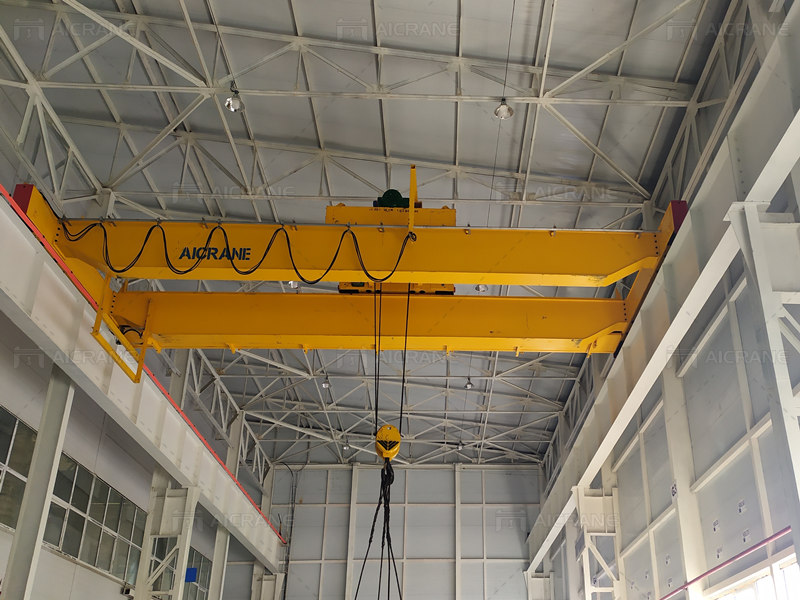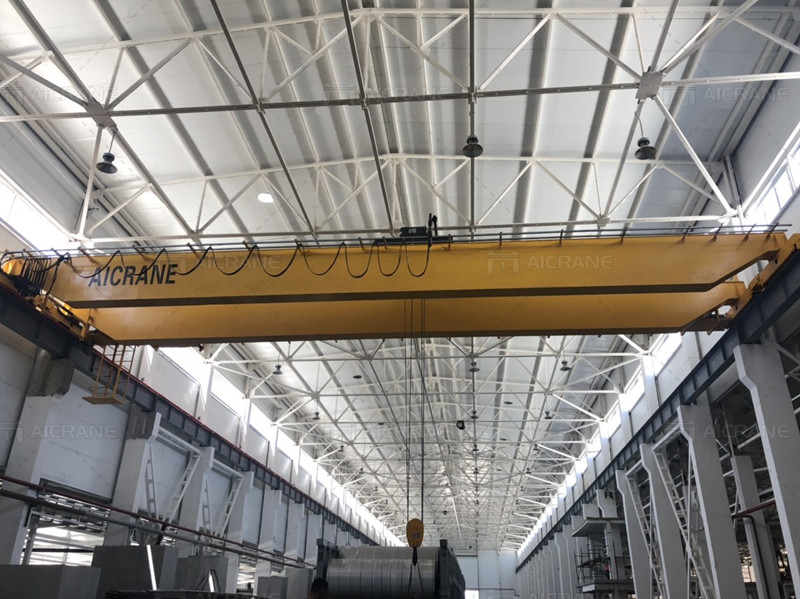In industrial settings where heavy loads need to be lifted and moved, ensuring workplace safety is paramount. Overhead crane systems play a critical role in achieving this objective by providing efficient and controlled means of material handling while minimizing the risk of accidents and injuries. In this article, we explore the various safety measures and features incorporated into overhead crane systems to safeguard workers and assets in the workplace.
Risk Factors in Material Handling
Material handling tasks involving heavy loads present inherent risks to workers and equipment. Factors such as improper lifting techniques, unstable loads, limited visibility, and congested work areas increase the likelihood of accidents, injuries, and damage to property. Ensuring workplace safety is essential not only for protecting personnel but also for maintaining operational continuity and avoiding costly downtime.
Load Limit Devices
One of the primary safety features of overhead crane systems is load limit devices, which prevent cranes from lifting loads that exceed their rated capacity. These devices use sensors to measure the weight of the load and automatically stop crane operation if the load exceeds the preset limit. By preventing overloading, load limit devices mitigate the risk of structural failure and ensure safe lifting operations(кран мостовой опорный).

Emergency Stop Buttons
Overhead crane systems are equipped with emergency stop buttons that allow operators to halt crane movement instantly in case of an emergency or hazardous situation. Located at strategic locations within reach of operators, these buttons provide a quick and effective means of stopping crane operation to prevent accidents or mitigate potential hazards.
Collision Avoidance Systems
To prevent collisions between cranes, equipment, and personnel, overhead crane systems are equipped with collision avoidance systems. These systems use sensors, cameras, or radar technology to detect objects in the crane’s path and automatically stop or alter crane movement to avoid collisions. By providing real-time alerts and warnings to operators, collision avoidance systems enhance safety and reduce the risk of accidents in busy work environments.
Operator Training and Certification
Ensuring the competence and proficiency of crane operators is crucial for maintaining workplace safety. Operator training and certification programs provide operators with the knowledge, skills, and expertise required to operate overhead crane systems safely and effectively. Training programs cover topics such as crane operation, load handling techniques, safety procedures, and emergency response protocols, empowering operators to perform their duties with confidence and competence.
Regular Maintenance and Inspections
Regular maintenance and inspections are essential for ensuring the safe and reliable operation of overhead crane systems(Кран мостовой подвесной). Scheduled maintenance activities, such as lubrication, alignment checks, and component inspections, help identify potential issues before they escalate into safety hazards. Additionally, routine inspections by qualified technicians ensure that overhead crane systems comply with safety standards and regulations, providing peace of mind to operators and stakeholders.
Implementing Safety Culture
Beyond technological features, fostering a safety culture within the workplace is essential for ensuring the effective operation of overhead crane systems. This involves instilling a mindset of safety awareness among all personnel, from crane operators to supervisors and management. Safety training programs, regular safety meetings, and open communication channels enable employees to voice concerns, report hazards, and share best practices, creating a collaborative environment where safety is everyone’s responsibility.
Continuous Improvement and Risk Assessment
Continuous improvement initiatives and regular risk assessments are integral components of maintaining workplace safety with overhead crane systems. By conducting periodic evaluations of work processes, equipment, and safety procedures, organizations can identify potential hazards, implement corrective measures, and prevent accidents before they occur. Additionally, feedback mechanisms and incident reporting systems enable organizations to learn from past experiences and refine their safety protocols to mitigate future risks. Visit website:https://www.aicrane.ru/

Investing in Ergonomics and Equipment
Investing in ergonomic design features and equipment upgrades further enhances workplace safety with overhead crane(Мостовой кран 60 тонн) systems. Ergonomically designed controls, operator cabins, and workstations reduce operator fatigue and discomfort, minimizing the risk of human error and improving overall performance. Additionally, retrofitting older crane systems with modern safety enhancements, such as anti-sway technology, remote monitoring systems, and improved visibility features, enhances operational safety and efficiency.
Promoting Accountability and Recognition
Promoting accountability and recognizing safety achievements are essential elements of a robust safety culture. Establishing clear roles and responsibilities for safety compliance, as well as implementing performance metrics and incentives tied to safety goals, encourages employees to prioritize safety in their daily activities. Furthermore, recognizing individuals and teams for their contributions to workplace safety fosters a sense of pride and commitment to maintaining a safe work environment.
In conclusion, ensuring workplace safety with overhead crane systems requires a multifaceted approach that encompasses engineering controls, safety features, operator training, and maintenance practices. By incorporating load limit devices, emergency stop buttons, collision avoidance systems, and operator training programs, overhead crane systems mitigate the risk of accidents and injuries in industrial environments. Furthermore, regular maintenance and inspections ensure the continued safe and reliable operation of overhead crane systems, safeguarding workers and assets while maximizing productivity and operational efficiency in the workplace.